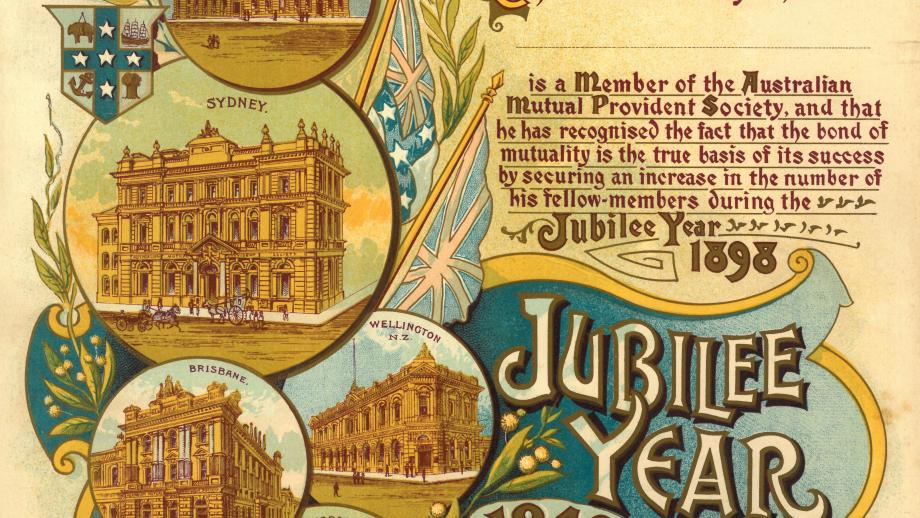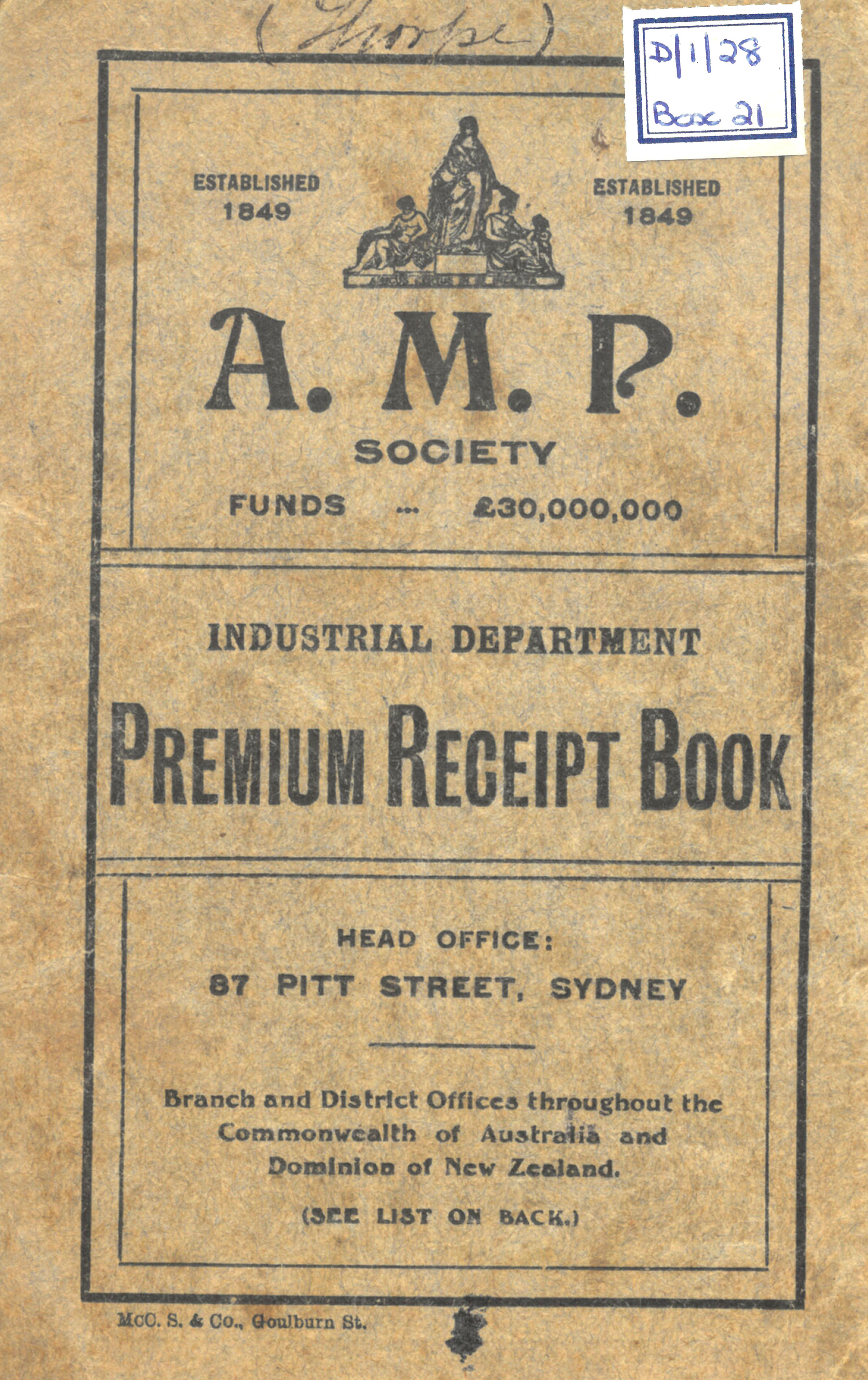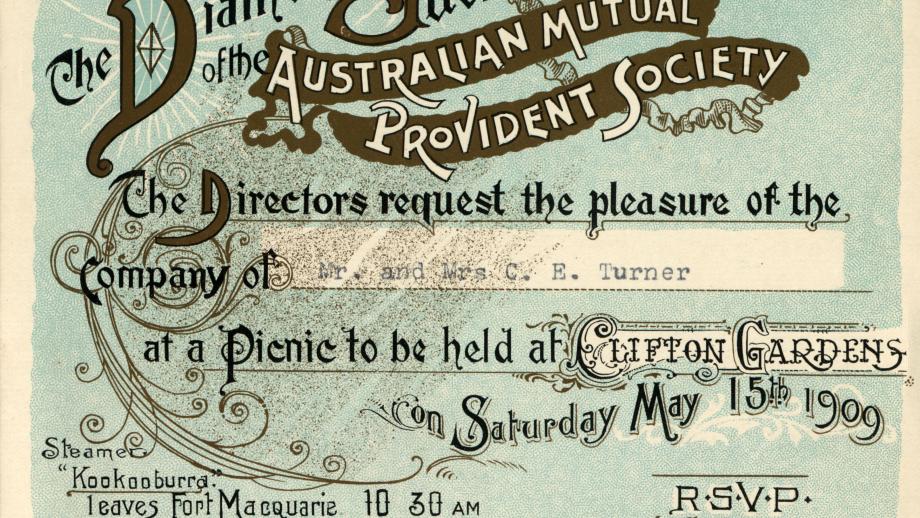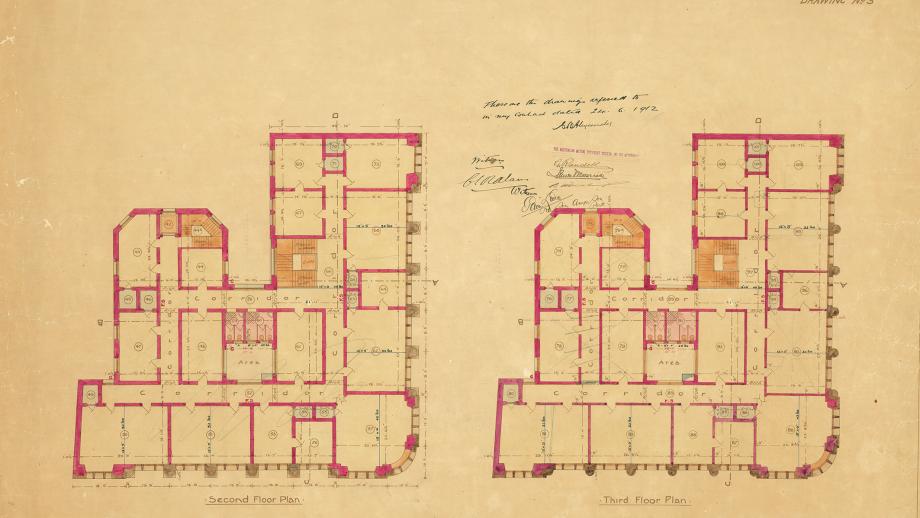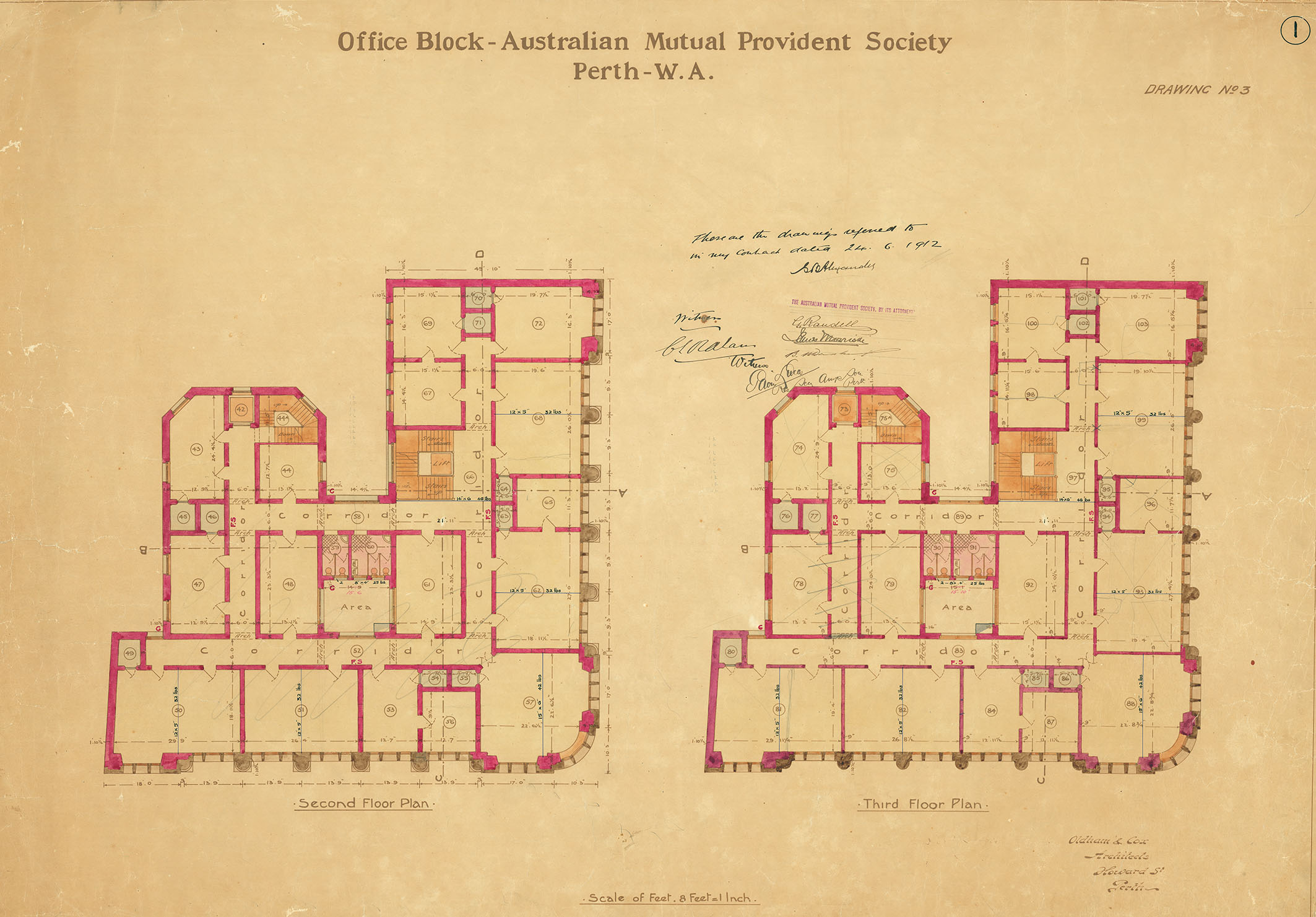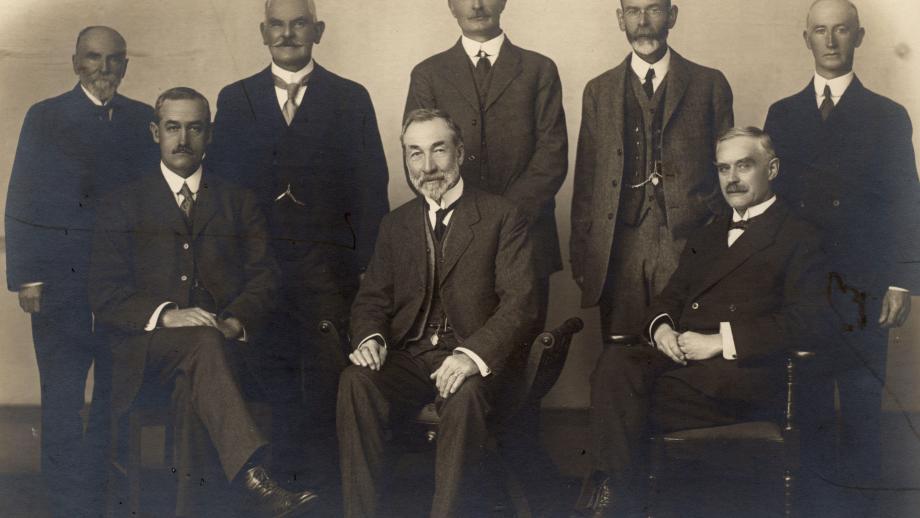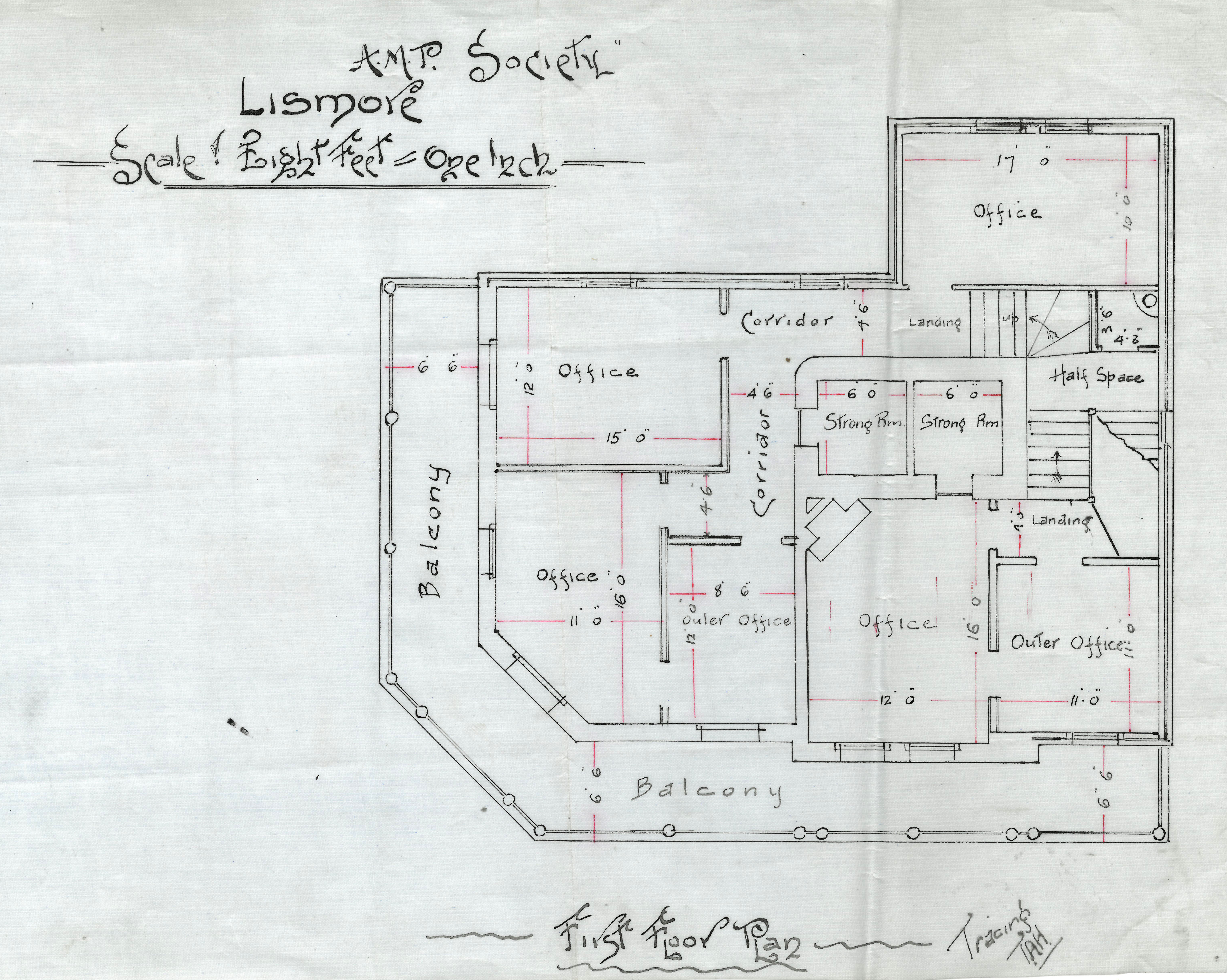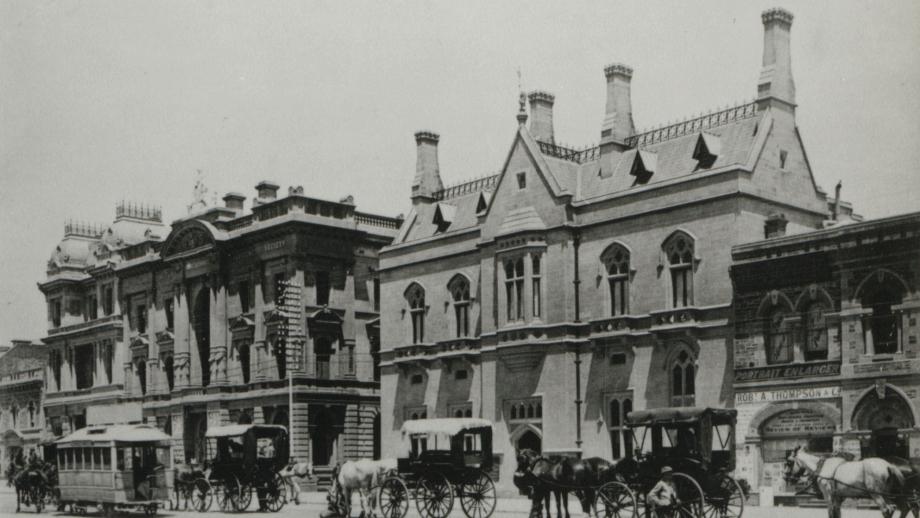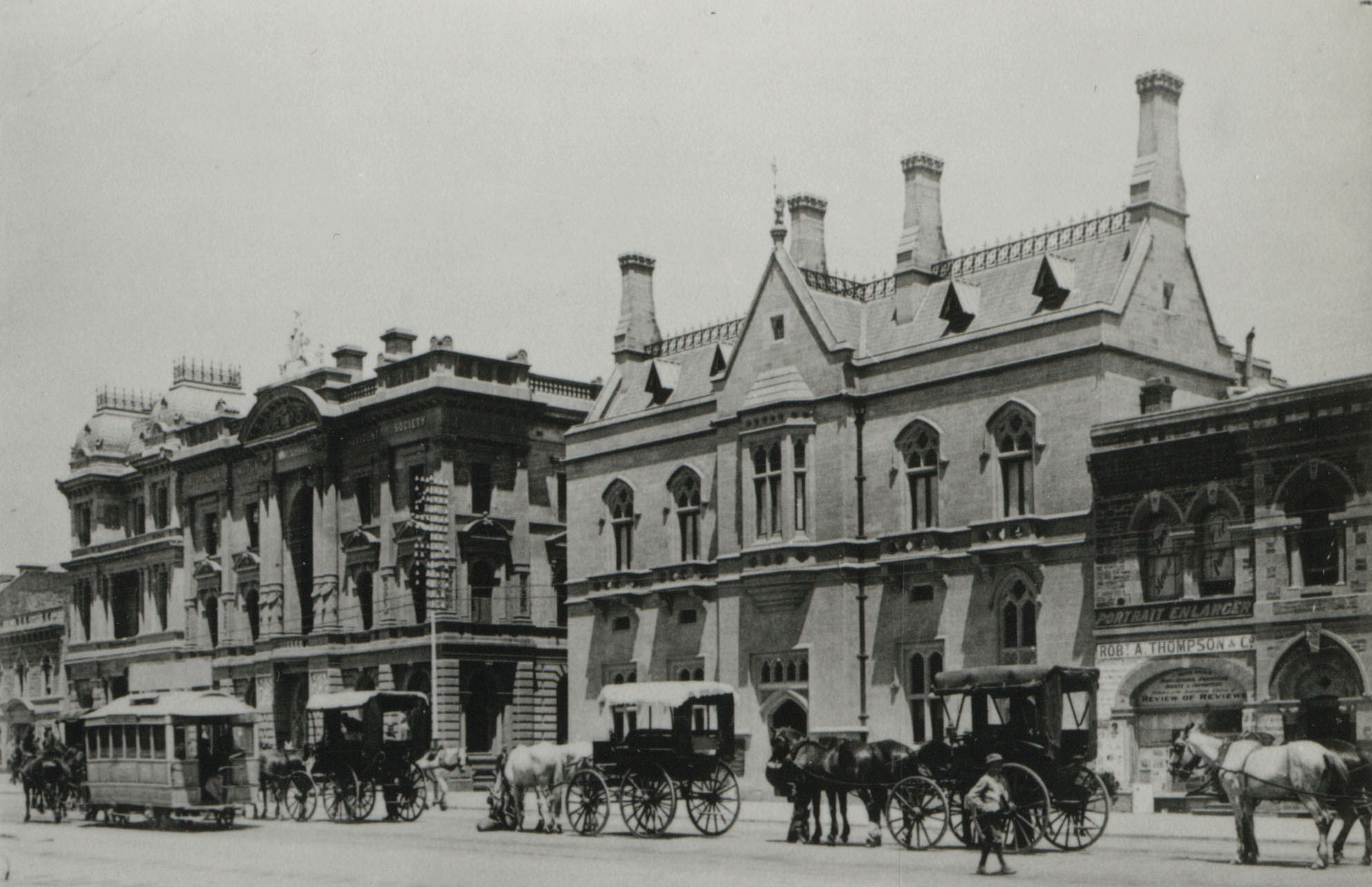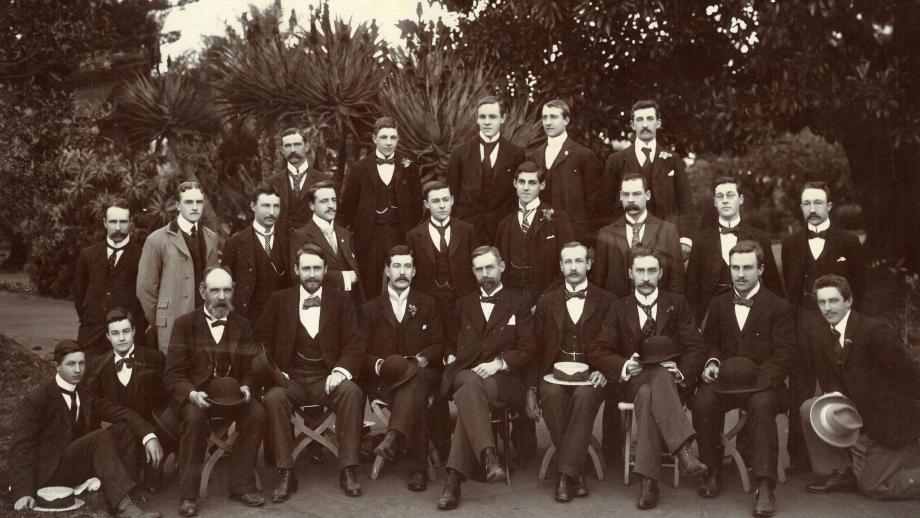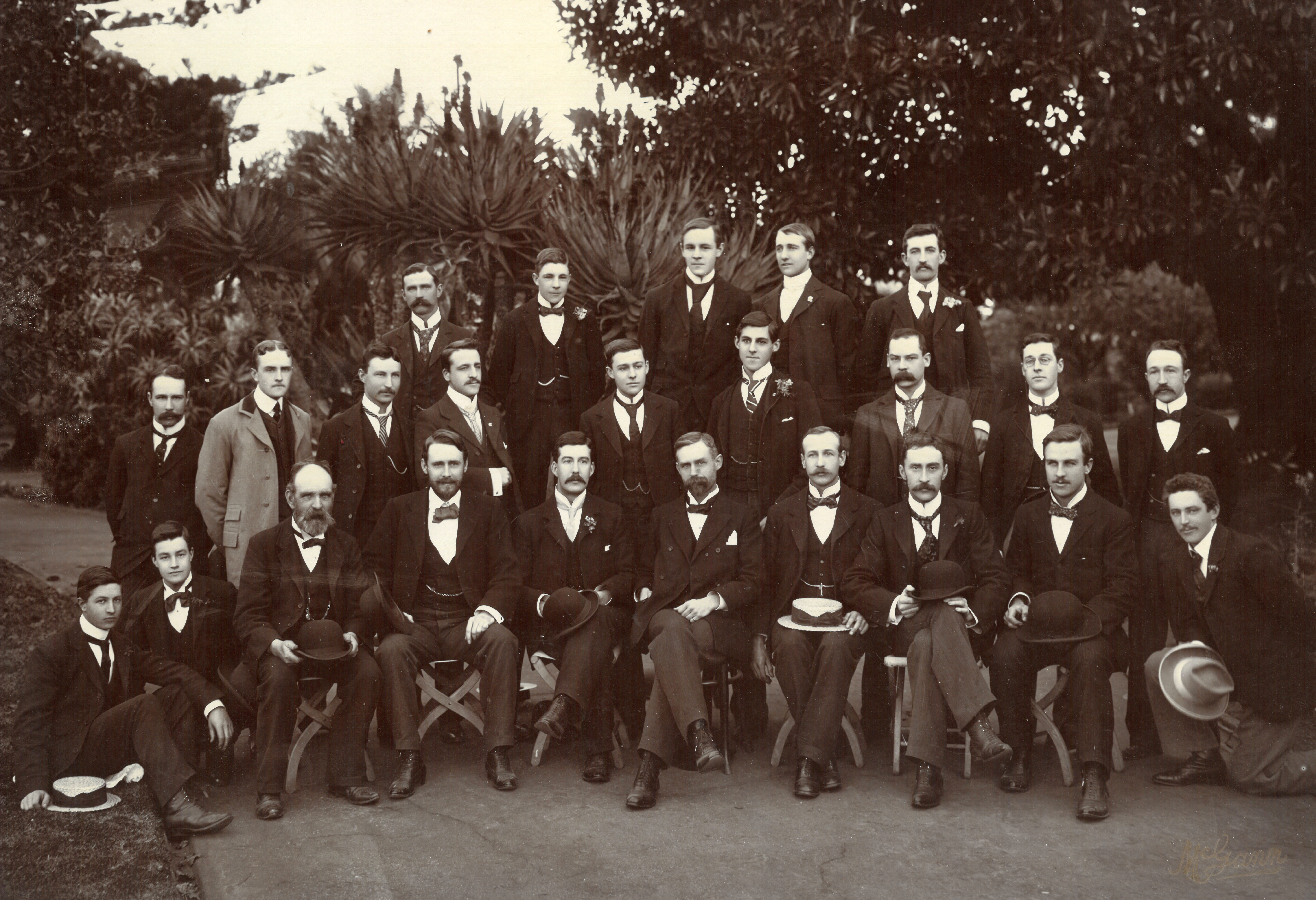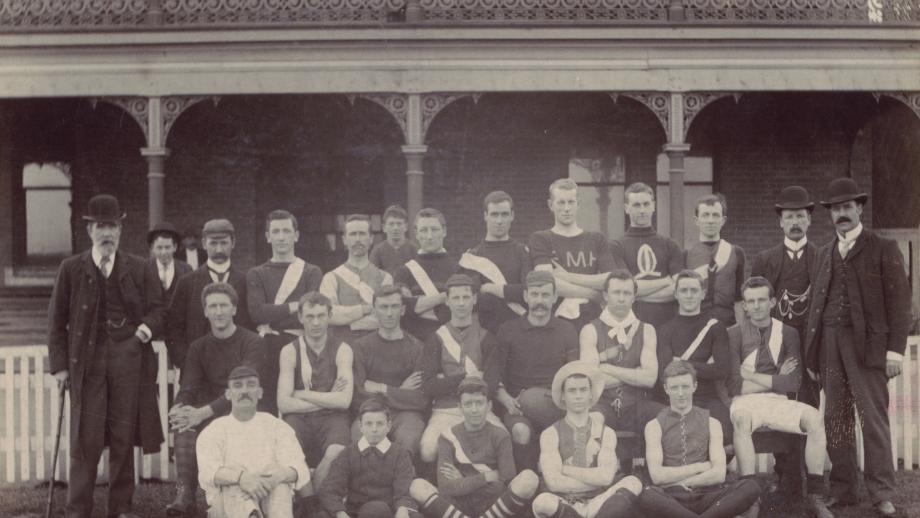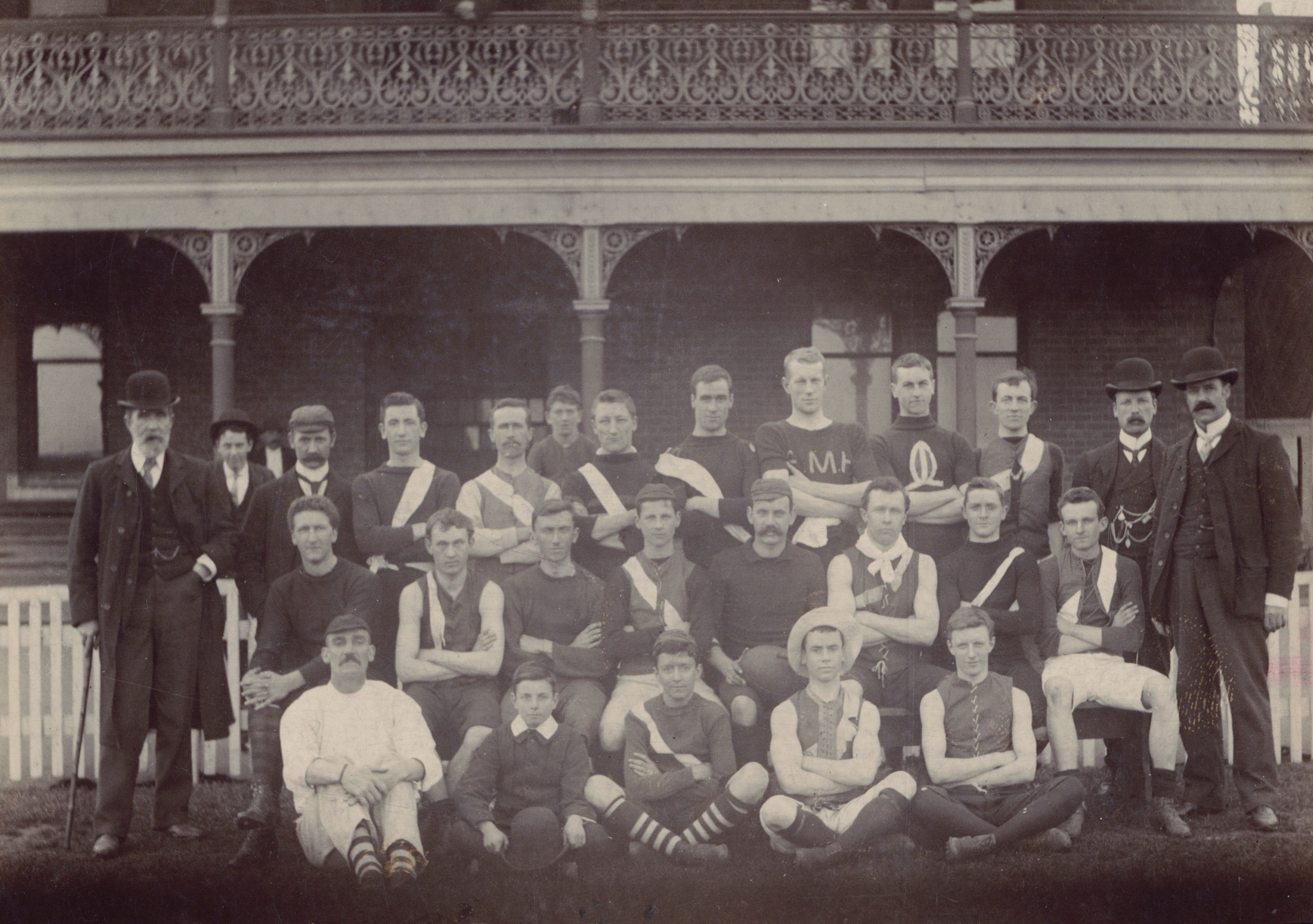A New Century and New Type of Insurance
In 1899 AMP celebrated its 50th anniversary. By this time, it was the largest life office outside Britain and only surpassed by one office within Britain, the Prudential Assurance Company. Bonuses were paid to staff and a celebratory picnic was held at Correy’s Gardens in Sydney with a luncheon, speeches, and games including a three-legged race and tug-of-war.
Soon after, the Boer War began in South Africa, and AMP needed to navigate managing policies for those who wished to enlist. Initially AMP was reluctant to offer policies to soldiers, but the weight of public opinion and the fact that its rivals were offering policies, resulted in a change of mind, although a “wartime loading” of £5 was added to every £100 of insurance (Blainey, 1999). AMP allowed staff to enlist, although they limited permission to unmarried staff. A total of eight AMP staff enlisted, among them were William Harriott, Frederick Broome, and Sam Tuckwell, who were all killed.
In 1901 the Commonwealth of Australia was formed. AMP was a strong supporter of federalism, as an organisation that had offices across Australia. When the first federal government was formed, Prime Minister Edmund Barton and his seven cabinet ministers were all AMP policyholders. These men included Alfred Deakin (who was a director on AMP’s Victorian Board) and Sir John Forrest. All allowed AMP to publicise their membership of the Society and Barton even wrote a glowing recommendation… “In my opinion, the Society and its operations have been of incalculable value to Australia”.
AMP continued to face increasing competition and regularly engaged in public relations battles with its rivals, particularly the American firms. However, a surprising win came in 1906 with the passing of legislation in the United States that restricted the American life offices so much that they ceased selling new policies in Australia. AMP did not of course attract all the new business this produced, but by this time it was still far outselling its competitors. In 1905, AMP held over £55 million of current life policies and its nearest rival, National Mutual, held £16 million (Blainey, 1999).
Keen to appeal to more working families, AMP sought to develop policies that were more affordable and offered simpler methods of payment. In Britain door-to-door salesmen were common but owing to Australia’s geographical size, door-to-door selling was challenging. In Britain products sold door-to-door were known as industrial assurance and involved an agent visiting the home of a policyholder and collecting an average of two pence a week to provide a family with a policy that would provide entitlements in old age, or funds should the breadwinner become unable to work or die (Blainey, 1999). When Richard Teece took over as general manager at AMP, he championed the introduction of industrial assurance and on 23 December 1903, the AMP board decided to establish an Industrial Department. This new Industrial Department opened on 1 January 1905 and was largely staffed by female employees, who were seen as best suited to undertake the necessary administrative work and were cheaper to employ than males.
Industrial assurance policies appealed to the working class, at a small cost of three pence per week collected at their home by a travelling agent. In the wake of the 1890s banking collapse, it was seen as a safer option than a bank deposit. Industrial policies remained popular throughout the early 1900s, particularly in working class areas, but by the 1940s their popularity was waning, and AMP subsequently reduced the number of its full-time industrial agents from approximately 1,400 in 1946 to approximately 800 in 1954 (Blainey, 1999).
In 1960 AMP made a concerted effort to revive its Industrial Department and subsequently tweaked its offering and changed the name of the product from ‘industrial policy’ to ‘collector policy’, which saw the demand for the product increase by 9% in just one year (Blainey, 1999).
